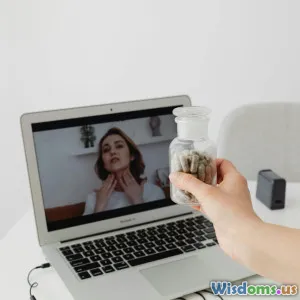
Electric Vehicles and Urban Air Quality
8 min read Explore how electric vehicles are transforming urban air quality and shaping sustainable cities worldwide. (0 Reviews)
Electric Vehicles and Urban Air Quality: Driving Toward Cleaner Cities
Urban areas worldwide face growing challenges associated with air pollution—particularly from transportation emissions. The rapid adoption of electric vehicles (EVs) represents a transformative opportunity to arrest and reverse deteriorating air quality in cities impacted by car exhaust. But how significant is this impact? This article explores the dynamic relationship between EVs and urban air quality, examining the extent of pollution reduction, health benefits, and challenges of integrating EVs into dense, complex urban environments.
The Urban Air Pollution Crisis: The Role of Internal Combustion Engines
Urban air pollution primarily derives from multiple sources, but transportation remains a leading contributor. According to the World Health Organization, outdoor air pollution causes approximately 4.2 million premature deaths yearly worldwide. Inside cities, nitrogen oxides (NOx), particulate matter (PM2.5 and PM10), and volatile organic compounds (VOCs) emitted by gasoline and diesel engines significantly degrade air quality.
For example, in cities like New Delhi, Beijing, and Los Angeles, traffic congestion with internal combustion engine (ICE) vehicles contributes to smog episodes and unhealthy air days. Nitrogen dioxide (NO2) is a particular concern; short-term exposure worsens respiratory conditions, while prolonged exposure leads to chronic lung diseases.
A 2019 study published in Nature highlighted that urban transport emissions account for up to 40% of NOx emissions in developed countries, underscoring the necessity of targeting vehicles in pollution mitigation strategies.
Electric Vehicles (EVs): A Clean Alternative
EVs offer a promising solution by eliminating tailpipe emissions entirely. Unlike ICE vehicles, electric cars produce zero local emissions, meaning no NOx, PM, or CO2 emissions from the car itself during operation. This fundamental difference carries enormous potential to improve urban air quality, especially in congestion hotspots.
Real-World Evidence of Air Quality Improvements
Several cities have demonstrated tangible improvements in urban air quality aligned with increasing EV adoption combined with complementary policies.
-
Oslo, Norway: Boasting the highest EV market share worldwide, Oslo has seen measurable declines in urban pollution levels. According to Norway’s Institute of Transport Economics, the rapid uptake of EVs helped reduce NOx concentration in traffic-dense areas by up to 20% over five years, contributing to fewer smog days.
-
Los Angeles, USA: A city notorious for its air pollution, LA’s Air Quality Management District reported that the wider availability of EVs, especially in ride-sharing fleets, has contributed to local PM2.5 reductions along major commuter corridors.
In less developed regions struggling with severe air pollution, scaling EVs alongside renewable energy infrastructure promises even greater benefits.
Health Benefits of Reducing Emissions through EVs
Improved air quality translates directly to better public health outcomes. Reduced exposure to NO2 and particulate matter correlates with lower rates of asthma, cardiovascular issues, lung infections, and other respiratory illnesses.
An OECD report estimated that achieving widespread EV adoption in urban centers could prevent tens of thousands of premature deaths annually worldwide by 2030. This effect includes reduced hospital admissions and improved quality of life, particularly for vulnerable populations such as children and the elderly.
Cardiologist Dr. Emily Diaz notes, “Transitioning to zero-emission vehicles is one of the most impactful public health moves cities can implement, reducing toxic emissions where people live and breathe.”
Challenges and Considerations in EV’s Impact on Air Quality
While the operational emissions of EVs vanish, quantifying their comprehensive environmental and air quality impact requires nuanced understanding:
Source of Electricity
The air quality benefit depends on the electricity’s carbon and pollutant intensity. EVs charged from coal-heavy grids still indirectly contribute to pollution, albeit concentrated away from city centers. However, as grids transition to renewables, the EV lifetime emissions profile improves significantly.
Tire and Brake Wear
EVs still contribute to non-tailpipe emissions such as particulate matter from tire and brake wear, which remain a significant urban pollutant source. Technological advances and urban design must also address these contributors alongside tailpipe emission reductions.
Equity and Infrastructure
Urban air quality gains depend on equitable EV adoption across all neighborhoods, including underprivileged areas usually burdened with poor air quality. Thus, developing affordable EV options and sufficient charging infrastructure is crucial for broad-scale health benefits.
Broader Urban Planning and Policy Initiatives Amplify EV Benefits
Integrating EVs into wider sustainable urban transportation strategies significantly magnifies their air quality impact.
Examples include:
-
Low Emission Zones (LEZs): Cities like London and Paris enforce LEZs where only zero/low-emission vehicles enter, pushing EV uptake and reducing harmful pollutants in city cores.
-
Electrified Public Transport and Micromobility: Buses, e-scooters, and bikes powered by electricity enhance last-mile connectivity with minimal environmental tradeoffs.
-
Smart Charging and Vehicle-to-Grid (V2G): Managing EV charging to align with renewable energy availability minimizes grid emissions, further reducing the impact on urban air quality.
A Vision for Cleaner Urban Skies
Electric vehicles represent a critical lever in combatting urban air pollution. Their transition aligns technological innovation with public health imperatives and environmental stewardship. Continuous policy support, clean grid evolution, and inclusive infrastructure development will accelerate progress towards truly breathable cities.
As cities worldwide navigate transport decarbonization, EVs symbolize hope—not just for reducing greenhouse gases but for reclaiming fresh, healthy air for urban populations. For policymakers, citizens, and technologists alike, the challenge and opportunity are clear: to steer simultaneously towards cleaner air and sustainable mobility.
References:
- World Health Organization, Ambient Air Pollution: https://www.who.int/news-room/fact-sheets/detail/ambient-(outdoor)-air-quality-and-health
- Gallery, P., et al., 2019, Nature: Emissions from transport and urban air pollution
- Norwegian Institute of Transport Economics: EV Impact Reports
- OECD, The Health and Climate Benefits of Electric Vehicles, 2020
- Los Angeles Air Quality Management District Report, 2022
Rate the Post
User Reviews
Popular Posts





















